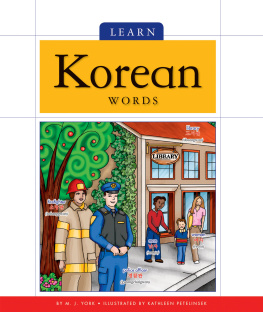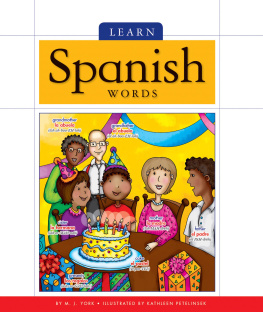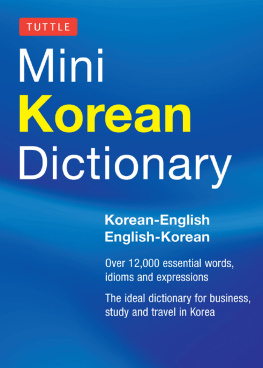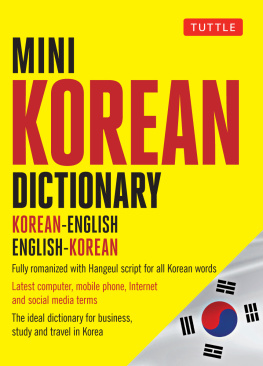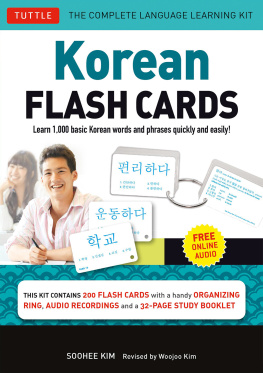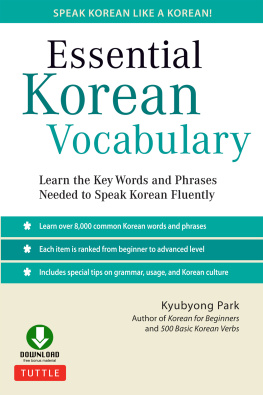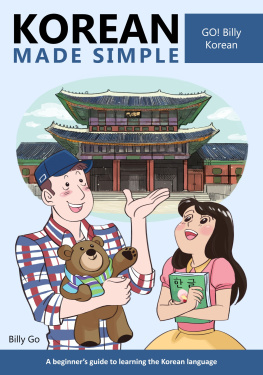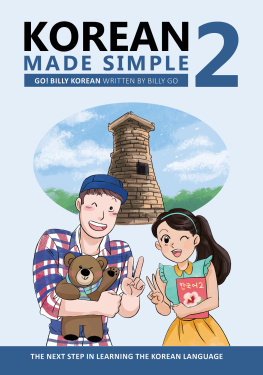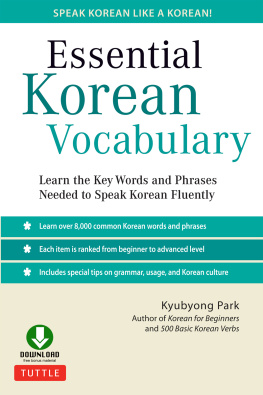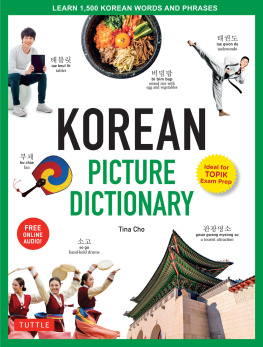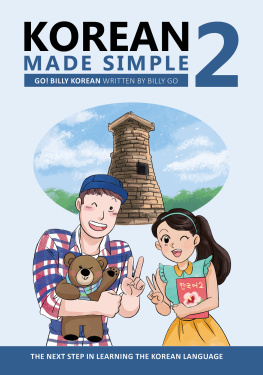
Korean
BY M. J. YORK ILLUSTRATED BY KATHLEEN PETELINSEK
LEARN
WORDS
man
(namja)
woman
(yeoja)
police ofcer
(gyeongchalgwan)
reghter
(sobanggwan)
library
(doseogwan)

Published by The Childs World
1980 Lookout Drive Mankato, MN 56003-1705
800-599-READ www.childsworld.com
Acknowledgments
Translator: Korean Senior Teaching Specialist, Department of
Asian Languages/Literatures, University of Minnesota
Copyright 2020 by The Childs World
All rights reserved. No part of this book may be reproduced or
utilized in any form or by any means without written permission
from the publisher.
ISBN 9781503843400
LCCN 2019944748
Printed in the United States of America
ABOUT THE AUTHOR
M. J. York is a childrens author and
editor living in Minnesota. She loves
learning about different people
and places.
ABOUT THE ILLUSTRATOR
Kathleen Petelinsek loves to draw
and paint. She also loves to travel
to exotic countries where people
speak foreign languages. She lives
in Minnesota with her husband, two
dogs, and a fluffy cat.

CONTENTS
Introduction to Korean ......................... 4
My Home .............................
In the Morning ..........................
At School ...........................
At the Park ..........................
Around Town ........................
In the Store .........................
My Birthday Party ................
Time for Dinner ................
At Night ................................
More Useful Words .............................

Introduction to Korean
Korean is spoken in South Korea and North Korea. There
are many Korean speakers in China, the United States,
and Japan, too. About 75 million people speak Korean.
The Korean alphabet is called Hangul. It was invented in
the 1400s.
North and South Korean have small differences but
mostly follow the same system. The language may be
related to Japanese or to Altaic languages. These include
Turkic and Mongolian. But scholars are not sure.
The Hangul alphabet has 24 letters. There are 14
consonants and 10 vowels. Consonants have angled or
curved lines. Vowels have horizontal or vertical lines.
Consonants and vowels stack together into square blocks
to make syllables. Syllables come together to make words.
A syllable is pronounced differently based on the syllables
around it. One system for writing Korean using Roman
letters is Revised Romanization.

Vowels
a as in f a ther
eo sounds like l o st
or th ou ght
o as in r o w
u sounds like y ou
eu sounds like g oo d
i sounds like m ee t
ae sounds like b ea r
e as in y e s
oe sounds like w ai t
w sounds like w ee
Consonants
g as in g ame
n as in n est
d as in d o
r or l (as in r am before
a vowel and as in l amb
before a consonant or
at the end of a word)
m as in m a
b as in b op
s as in s ay
ng (as in runni ng or
silent when beginning
a syllable)
j as in j ump
ch as in ch urch
k as in k ing
t as in t ower
p as in p ool
h as in h at

My Home
(uri jip)
lamp
(raempeu)
bedroom
(chimsil)
kitchen
(bueok)
table
(siktak)
bathroom
(hwajangsil)
window
(changmun)
sofa
(sopa)
cat
(goyangi)
living room
(geosil)
chair
(uija)
television
(tellebijeon)

car
(jadongcha)
Where do you live?
?
(eodiseo sarayo?)
I live in an apartment.
.
(apateueseo sarayo.)
dog
(gae)
garden
(teotbat)
MORE USEFUL WORDS
I live in a house.
.
(jibeseo sarayo.)
garage
(chago)

dresser
(seorapjang)
doll
(inhyeong)
teddy bear
(gom inhyeong)
pillow
(begae)
In the Morning
(achime)
clock
(sigye)
bed
(chimdae)
blanket
(ibul)

dress
(wonpiseu)
shoes
(sinbal)
closet
(byeokjang)
brush
(solbit)
comb
(bit)
shirt
(syeocheu)
Good morning! It is seven oclock.
!
.
(anneonghaseyo!
ilgopsiyeyo.)
skirt
(chima)
socks
(yangmal)
MORE USEFUL WORDS
I feel happy.
.
(jeoneun haengbokaeyo.)
I feel sad.
.
(jeoneun gibuni an joayo.)
I feel tired.
.
(jeoneun pigonhaeyo.)
I feel awake.
.
(jeongsini deuneun geot gatayo.)
pants
(baji)

At School
(hakgyoeseo)
What is your name?
?
(ireumi mwoyeyo?)
I like math.
.
(jeoneun suhageul joahaeyo.)
teacher
(seonsaengnim)

